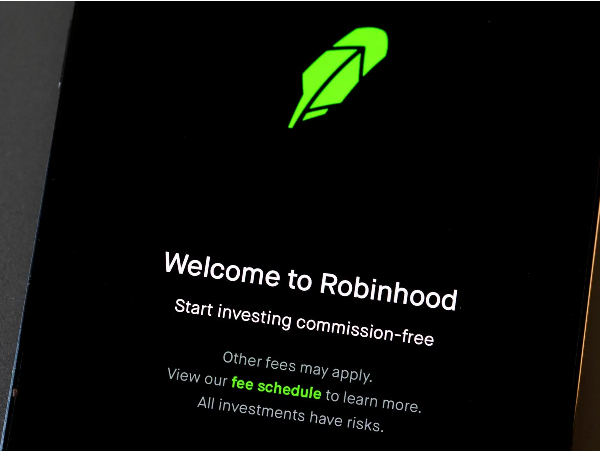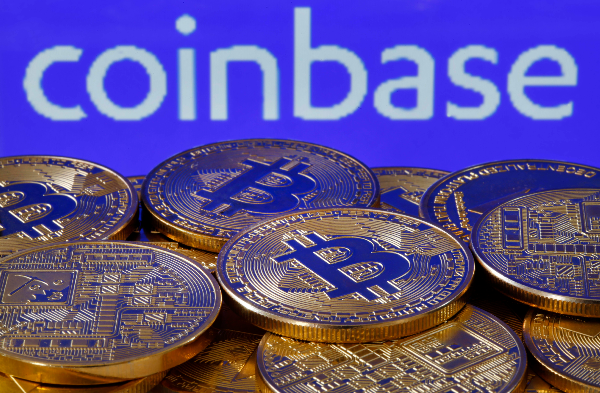Key Takeaways
Below are the top lumber ETFs you can invest in:
| ETF Name |
Assets Under Management (AUM) |
Expense Ratio |
Dividend Yield |
Key Holdings |
Brief Description |
| iShares Global Timber & Forestry ETF (WOOD) |
$250M+ |
0.41% |
~2.19% |
Weyerhaeuser, Svenska Cellulosa, Suzano |
Focuses on global timber and forestry companies, providing exposure to timberland REITs and wood product manufacturers. |
| Invesco MSCI Global Timber ETF (CUT) |
$100M+ |
0.67% |
~3.27% |
Amcor, Avery Dennison, Svenska Cellulosa |
Invests in timberland management and packaging industries with global exposure, offering higher dividend yield but greater volatility. |
| SPDR S&P Global Natural Resources ETF (GNR) |
$3B+ |
0.40% |
~2.50% |
Rio Tinto, BHP, Weyerhaeuser |
Diversified ETF covering natural resources, including timber, energy, and agriculture, offering broader exposure beyond forestry. |
| FlexShares Morningstar Global Upstream Natural Resources ETF (GUNR) |
$5B+ |
0.46% |
~2.00% |
Nutrien, Suzano, International Paper |
Focuses on commodity producers across multiple industries, including timber, making it a diversified alternative to direct forestry ETFs. |
Investing in lumber ETFs provides a strategic way to gain exposure to the timber and forestry industries without directly purchasing individual stocks. These ETFs typically include a diversified mix of timberland REITs, forestry companies, and lumber producers, offering investors a balanced approach to the sector. Lumber investments can serve as a hedge against inflation, as timberland values tend to appreciate over time. Additionally, the demand for lumber is closely tied to economic growth and housing market trends, making it a compelling option for long-term investors.
Timber and forestry-related ETFs appeal to investors due to their unique combination of financial returns and sustainability benefits. Timber investments are considered real assets, meaning they provide tangible value that can appreciate independently of stock market fluctuations. Additionally, forestry investments align with environmental goals, as sustainable timber harvesting contributes to carbon sequestration and responsible land management. Many ETFs in this sector focus on companies that prioritize eco-friendly practices, making them attractive to investors seeking both profitability and sustainability.
Understanding Lumber ETFs
Exchange-traded funds (ETFs) are investment funds that hold a diversified portfolio of assets and trade on stock exchanges like individual stocks. Lumber ETFs specifically focus on companies involved in timberland management, forestry, and lumber production. These funds provide investors with exposure to the timber industry without requiring direct ownership of individual stocks, offering diversification and liquidity advantages..
Lumber ETFs differ from direct stock investments by pooling multiple timber-related assets into a single fund. While individual lumber stocks may experience volatility due to company-specific risks, ETFs mitigate this by spreading investments across various firms, including timberland REITs, paper manufacturers, and forestry companies. This diversification helps investors manage risk while still benefiting from industry growth.
Investing in lumber ETFs comes with both benefits and risks. On the positive side, timber investments can act as a hedge against inflation, as wood prices tend to rise with economic expansion. Additionally, many timber ETFs provide dividend income through REIT holdings. However, risks include market fluctuations, regulatory changes, and environmental concerns that may impact forestry operations. Investors should carefully assess expense ratios, historical performance, and sector trends before committing to lumber ETFs.
Market Drivers for Lumber Investments
Lumber prices are influenced by several economic factors, including housing market demand, interest rates, and inflation. When construction activity increases, demand for lumber rises, driving prices higher. Conversely, economic downturns can lead to reduced demand and lower prices. Additionally, global trade policies, such as tariffs on imported lumber, can significantly impact costs and availability.
Supply and demand dynamics play a crucial role in timber markets. Timber supply is affected by factors such as forest management practices, climate conditions, and logging regulations. Meanwhile, demand is driven by industries like construction, furniture manufacturing, and paper production. Sustainable forestry practices and technological advancements in timber processing also shape market trends, influencing pricing and investment opportunities.
Sustainability and ESG considerations are becoming increasingly important in forestry investments. Many timber ETFs focus on companies that adhere to responsible land management and carbon sequestration practices. Investors are drawn to funds that prioritize environmental stewardship, as sustainable forestry can enhance long-term profitability while mitigating climate risks. ESG-focused timber investments align with global efforts to reduce deforestation and promote renewable resources.
Top Lumber ETFs: Overview & Comparison
Selecting the best lumber ETFs requires evaluating key factors such as assets under management (AUM), historical performance, expense ratios, and sector diversification. Investors should consider ETFs with strong liquidity, a diversified portfolio of timber-related companies, and a track record of stable returns. Additionally, expense ratios play a crucial role in determining long-term profitability, as lower fees can enhance overall returns. The leading timber ETFs—iShares Global Timber & Forestry ETF (WOOD) and Invesco MSCI Global Timber ETF (CUT)—offer exposure to forestry, timberland REITs, and paper product manufacturers, each with distinct investment strategies and risk profiles.
WOOD provides investors with broad exposure to companies involved in forestry, timberland management, and paper production. The fund tracks the S&P Global Timber & Forestry Index and includes holdings such as Weyerhaeuser, Svenska Cellulosa, and Suzano. Historically, WOOD has demonstrated moderate volatility, with a 5-year annualized return of 11.25% and a 10-year return of 5.13%. The ETF has an expense ratio of 0.41% and a dividend yield of approximately 2.19%. While WOOD offers global diversification, its performance is sensitive to fluctuations in lumber prices and economic cycles, making it a suitable option for long-term investors seeking exposure to sustainable forestry.
CUT tracks the MSCI ACWI IMI Timber Select Capped Index, investing in companies engaged in timberland management and wood-based product manufacturing. Its top holdings include Amcor, Avery Dennison, and Svenska Cellulosa, with a significant portion allocated to U.S. and European markets. CUT has an expense ratio of 0.67% and a dividend yield of 3.27%, making it slightly more expensive than WOOD. The ETF has exhibited a 5-year total return of 45.18%, though its 1-year return has been negative at -7.38%. While CUT provides broader exposure to packaging and paper industries, it carries higher volatility and a lower correlation with traditional timber investments compared to WOOD.
Other Notable Timber and Forestry ETFs
Beyond WOOD and CUT, investors can explore niche timber ETFs such as the
GNR offers diversified exposure to natural resources, including timber, while GUNR focuses on upstream commodity producers. These ETFs provide alternative investment options for those seeking broader exposure beyond traditional timberland REITs. Compared to WOOD and CUT, these funds tend to have lower direct exposure to timber stocks but offer greater diversification across commodities and forestry-related industries.
Investment Strategies for Lumber ETFs
Investors can approach lumber ETFs with either short-term or long-term strategies, depending on their financial goals. Short-term investors may capitalize on price fluctuations driven by housing market trends and seasonal demand, while long-term investors benefit from timber’s ability to appreciate over time. Diversification is key to balancing risks, as lumber ETFs often include timberland REITs, forestry companies, and paper manufacturers. Spreading investments across different ETFs or sectors can mitigate volatility. Additionally, tax considerations play a role in ETF selection, as long-term holdings may qualify for lower capital gains tax rates, while frequent trading can lead to higher tax liabilities.
Risks and Challenges in Lumber ETF Investments
Lumber ETFs are subject to market volatility, with prices fluctuating due to housing demand, interest rates, and inflation. Regulatory changes, such as environmental policies and logging restrictions, can impact timber supply and affect ETF performance. Additionally, global trade concerns, including tariffs on Canadian lumber imports, create uncertainty in pricing and availability. Supply chain disruptions, such as transportation bottlenecks and labor shortages, further contribute to investment risks, making it essential for investors to monitor industry developments.
Future Outlook: Lumber ETFs & Industry Trends
Sustainable forestry investments are expected to grow as demand for eco-friendly building materials rises. Many timber ETFs focus on companies that prioritize responsible land management and carbon sequestration, aligning with global sustainability efforts. Technological innovations, such as AI-driven forestry management and advanced lumber processing techniques, are improving efficiency and profitability in the sector. Emerging markets present new opportunities for investors, as countries with expanding infrastructure projects increase their reliance on timber products.
Conclusion
Lumber ETFs provide investors with diversified exposure to the timber industry, offering both inflation protection and sustainability benefits. Leading ETFs like iShares Global Timber & Forestry ETF (WOOD) and Invesco MSCI Global Timber ETF (CUT) have distinct strengths, with WOOD focusing on global timberland REITs and CUT offering broader exposure to packaging and paper industries. Investors should assess expense ratios, dividend yields, and market trends to determine the best fit for their portfolios.






























Below are the top lumber ETFs you can invest in:
Investing in lumber ETFs provides a strategic way to gain exposure to the timber and forestry industries without directly purchasing individual stocks. These ETFs typically include a diversified mix of timberland REITs, forestry companies, and lumber producers, offering investors a balanced approach to the sector. Lumber investments can serve as a hedge against inflation, as timberland values tend to appreciate over time. Additionally, the demand for lumber is closely tied to economic growth and housing market trends, making it a compelling option for long-term investors.
Timber and forestry-related ETFs appeal to investors due to their unique combination of financial returns and sustainability benefits. Timber investments are considered real assets, meaning they provide tangible value that can appreciate independently of stock market fluctuations. Additionally, forestry investments align with environmental goals, as sustainable timber harvesting contributes to carbon sequestration and responsible land management. Many ETFs in this sector focus on companies that prioritize eco-friendly practices, making them attractive to investors seeking both profitability and sustainability.
Understanding Lumber ETFs
Exchange-traded funds (ETFs) are investment funds that hold a diversified portfolio of assets and trade on stock exchanges like individual stocks. Lumber ETFs specifically focus on companies involved in timberland management, forestry, and lumber production. These funds provide investors with exposure to the timber industry without requiring direct ownership of individual stocks, offering diversification and liquidity advantages..
Lumber ETFs differ from direct stock investments by pooling multiple timber-related assets into a single fund. While individual lumber stocks may experience volatility due to company-specific risks, ETFs mitigate this by spreading investments across various firms, including timberland REITs, paper manufacturers, and forestry companies. This diversification helps investors manage risk while still benefiting from industry growth.
Investing in lumber ETFs comes with both benefits and risks. On the positive side, timber investments can act as a hedge against inflation, as wood prices tend to rise with economic expansion. Additionally, many timber ETFs provide dividend income through REIT holdings. However, risks include market fluctuations, regulatory changes, and environmental concerns that may impact forestry operations. Investors should carefully assess expense ratios, historical performance, and sector trends before committing to lumber ETFs.
Market Drivers for Lumber Investments
Lumber prices are influenced by several economic factors, including housing market demand, interest rates, and inflation. When construction activity increases, demand for lumber rises, driving prices higher. Conversely, economic downturns can lead to reduced demand and lower prices. Additionally, global trade policies, such as tariffs on imported lumber, can significantly impact costs and availability.
Supply and demand dynamics play a crucial role in timber markets. Timber supply is affected by factors such as forest management practices, climate conditions, and logging regulations. Meanwhile, demand is driven by industries like construction, furniture manufacturing, and paper production. Sustainable forestry practices and technological advancements in timber processing also shape market trends, influencing pricing and investment opportunities.
Sustainability and ESG considerations are becoming increasingly important in forestry investments. Many timber ETFs focus on companies that adhere to responsible land management and carbon sequestration practices. Investors are drawn to funds that prioritize environmental stewardship, as sustainable forestry can enhance long-term profitability while mitigating climate risks. ESG-focused timber investments align with global efforts to reduce deforestation and promote renewable resources.
Top Lumber ETFs: Overview & Comparison
Selecting the best lumber ETFs requires evaluating key factors such as assets under management (AUM), historical performance, expense ratios, and sector diversification. Investors should consider ETFs with strong liquidity, a diversified portfolio of timber-related companies, and a track record of stable returns. Additionally, expense ratios play a crucial role in determining long-term profitability, as lower fees can enhance overall returns. The leading timber ETFs—iShares Global Timber & Forestry ETF (WOOD) and Invesco MSCI Global Timber ETF (CUT)—offer exposure to forestry, timberland REITs, and paper product manufacturers, each with distinct investment strategies and risk profiles.
iShares Global Timber & Forestry ETF (WOOD)
WOOD provides investors with broad exposure to companies involved in forestry, timberland management, and paper production. The fund tracks the S&P Global Timber & Forestry Index and includes holdings such as Weyerhaeuser, Svenska Cellulosa, and Suzano. Historically, WOOD has demonstrated moderate volatility, with a 5-year annualized return of 11.25% and a 10-year return of 5.13%. The ETF has an expense ratio of 0.41% and a dividend yield of approximately 2.19%. While WOOD offers global diversification, its performance is sensitive to fluctuations in lumber prices and economic cycles, making it a suitable option for long-term investors seeking exposure to sustainable forestry.
Invesco MSCI Global Timber ETF (CUT)
CUT tracks the MSCI ACWI IMI Timber Select Capped Index, investing in companies engaged in timberland management and wood-based product manufacturing. Its top holdings include Amcor, Avery Dennison, and Svenska Cellulosa, with a significant portion allocated to U.S. and European markets. CUT has an expense ratio of 0.67% and a dividend yield of 3.27%, making it slightly more expensive than WOOD. The ETF has exhibited a 5-year total return of 45.18%, though its 1-year return has been negative at -7.38%. While CUT provides broader exposure to packaging and paper industries, it carries higher volatility and a lower correlation with traditional timber investments compared to WOOD.
Other Notable Timber and Forestry ETFs
Beyond WOOD and CUT, investors can explore niche timber ETFs such as the
GNR offers diversified exposure to natural resources, including timber, while GUNR focuses on upstream commodity producers. These ETFs provide alternative investment options for those seeking broader exposure beyond traditional timberland REITs. Compared to WOOD and CUT, these funds tend to have lower direct exposure to timber stocks but offer greater diversification across commodities and forestry-related industries.
Investment Strategies for Lumber ETFs
Investors can approach lumber ETFs with either short-term or long-term strategies, depending on their financial goals. Short-term investors may capitalize on price fluctuations driven by housing market trends and seasonal demand, while long-term investors benefit from timber’s ability to appreciate over time. Diversification is key to balancing risks, as lumber ETFs often include timberland REITs, forestry companies, and paper manufacturers. Spreading investments across different ETFs or sectors can mitigate volatility. Additionally, tax considerations play a role in ETF selection, as long-term holdings may qualify for lower capital gains tax rates, while frequent trading can lead to higher tax liabilities.
Risks and Challenges in Lumber ETF Investments
Lumber ETFs are subject to market volatility, with prices fluctuating due to housing demand, interest rates, and inflation. Regulatory changes, such as environmental policies and logging restrictions, can impact timber supply and affect ETF performance. Additionally, global trade concerns, including tariffs on Canadian lumber imports, create uncertainty in pricing and availability. Supply chain disruptions, such as transportation bottlenecks and labor shortages, further contribute to investment risks, making it essential for investors to monitor industry developments.
Future Outlook: Lumber ETFs & Industry Trends
Sustainable forestry investments are expected to grow as demand for eco-friendly building materials rises. Many timber ETFs focus on companies that prioritize responsible land management and carbon sequestration, aligning with global sustainability efforts. Technological innovations, such as AI-driven forestry management and advanced lumber processing techniques, are improving efficiency and profitability in the sector. Emerging markets present new opportunities for investors, as countries with expanding infrastructure projects increase their reliance on timber products.
Conclusion
Lumber ETFs provide investors with diversified exposure to the timber industry, offering both inflation protection and sustainability benefits. Leading ETFs like iShares Global Timber & Forestry ETF (WOOD) and Invesco MSCI Global Timber ETF (CUT) have distinct strengths, with WOOD focusing on global timberland REITs and CUT offering broader exposure to packaging and paper industries. Investors should assess expense ratios, dividend yields, and market trends to determine the best fit for their portfolios.